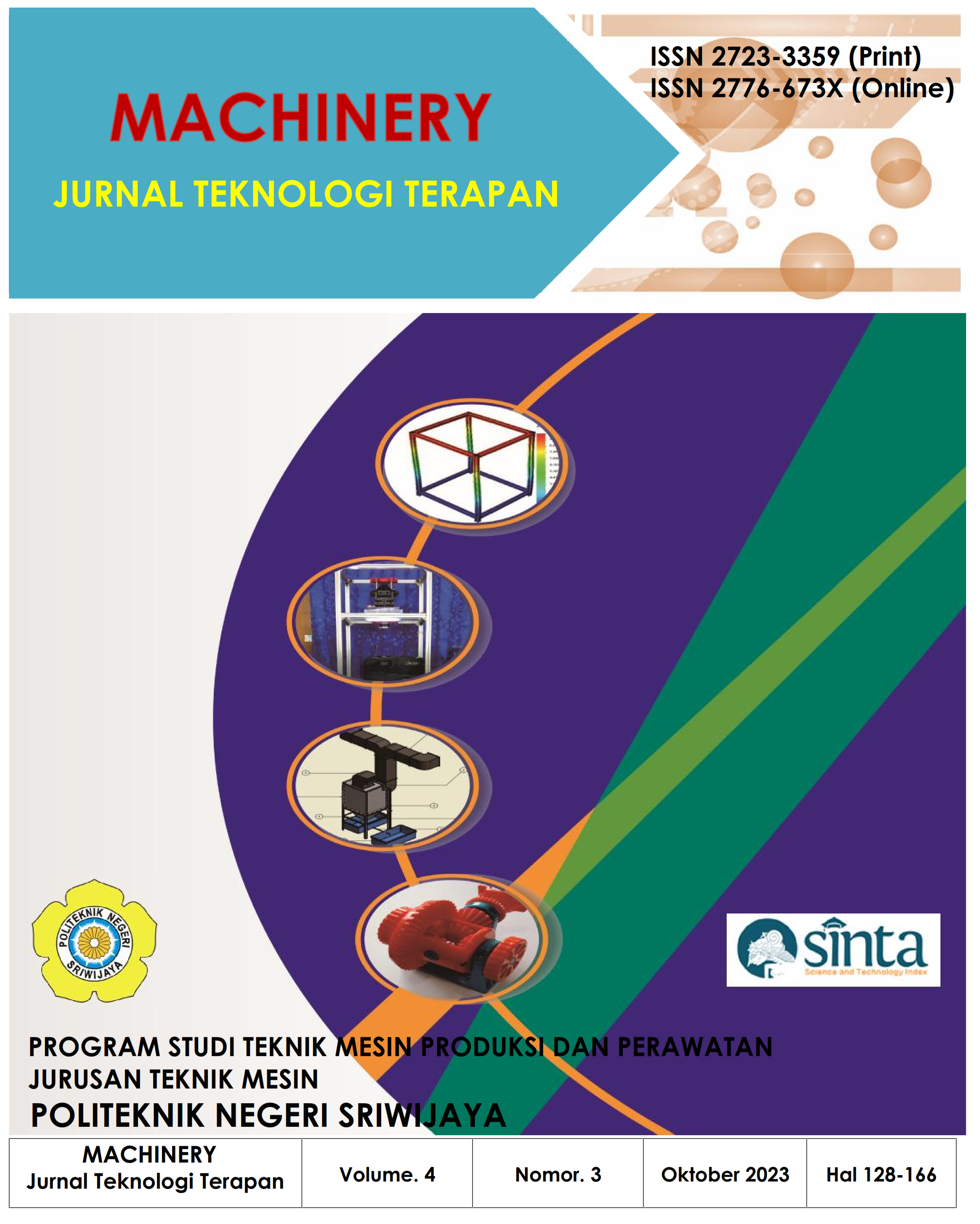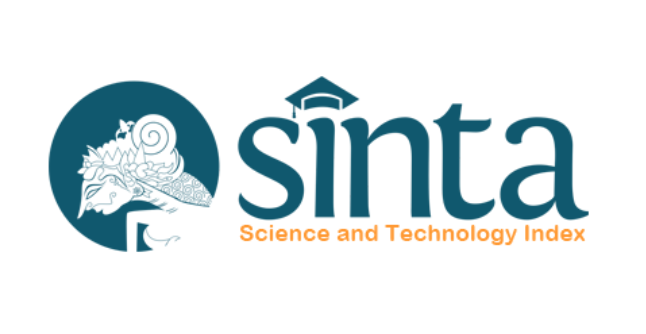ANALISA EFISIENSI THERMAL BOILER TIPE CIRCULATION FLUIDIZED BED DI PLTU 3x10MW
DOI:
https://doi.org/10.5281/zenodo.10122406Keywords:
boiler, coal, thermal efficiency, direct method, calorific valueAbstract
The need for electrical energy is increasing with economic growth. One of the government's efforts to increase electricity production is with the existence of Steam Power Plants. Boiler or steam generator a tool utilized to generate steam which consists of two important components, namely a heating system to generate heat from burning fuel and a system that converts water into steam. The percentage of boiler performance is the percentage of energy absorbed by the steam boiler with fuel input energy. Boiler performance greatly affects the performance of a PLTU where the use of fuel affects the steam produced. This research was carried out using the direct method by taking daily boiler log sheet data for 2 months, namely April and May, using coal calorific values, namely 5615 kcal/kg and 5654 kcal/kg. The results, the highest boiler efficiency was 55.95% with a calorific value of 5654 coal while the lowest boiler efficiency was 36.29% with a calorific value of 5615 kcal/kg. From the results obtained, it can be concluded that the steam flow rate is not constant and the excessive use of fuel causes boiler efficiency to experience conditions that are not optimal. The calorific value of coal is affected by the water content contained in the coal. The higher the water content, the more energy is required for the coal burning process.
Downloads
References
Anggreini, D., Bahtiar, S., Widyawati, F., & Hidayat, S. (2021). Science and Technology Analisis Hubungan Kandungan Total Moisture ,Total Sulphur. 5(3), 50–55.
Arham, A., Septiawan, M. Y., Bhuana, C., & Mulyadi, M. (2015). Evaluasi Kinerja Boiler Combustion Fluidized Bed ( Cfb ) Di Pt . Pln ( Persero ) Unit Pltu Barru. 75–88.
Çengel, Y. A. (2017). Fundamentals of fluid-thermal sciences. In McGraw-Hill Education (Vol. 2, Issue 27).
EBTKE, H. (2023). Dirjen EBTKE Paparkan Pemenuhan Kebutuhan Listrik Indonesia Melalui Pemanfaatan EBT. EBTKE. https://ebtke.esdm.go.id/post/2023/01/20/3405/dirjen.ebtke.paparkan.pemenuhan. kebutuhan.listrik.indonesia.melalui.pemanfaatan.ebt#:~:text=“Pada tahun 2022%2C kebutuhan listrik,energi baru terbarukan (EBT).
Huseini, F., Solihin, & Pramusanto. (2018). Kajian Kualitas Batubara Berdasarkan Analisis Proksimat, Total Sulfur dan Nilai Kalor Untuk Pembakaran Bahan Baku Semen di PT Semen Padang Kelurahan Batu Gadang, Kecamatan Lubuk Kilangan, Kota Padang Provinsi Sumatera Barat. Prosiding Teknik Pertambangan, 4(2), 668–677.
Moran, M. J. (n.d.). Fundamentals of Engineering Thermodynamics Seventh Edition.
Muzaki, I., & Mursadin, A. (2019). Analisis Efisiensi Boiler Dengan Metode Input– Output Di Pt. Japfa Comfeed Indonesia Tbk. Unit Banjarmasin. Scientific Journal of Mechanical Engineering Kinematika, 4(1), 37–46. https://doi.org/10.20527/sjmekinematika.v4i1.50
Nanda Kumara, I., Hie Khwee, K., Teknik Elektro, J., Teknik, F., & Tanjungpura Jln Hadari Nawawi, U. H. (2021). Studi Pengaruh Heat Rate Terhadap Kinerja Pada Pltu Biomassa Di Pt. Harjohn Timber. Jurnal Teknik Elektro Universitas Tanjungpura, 2(1). https://jurnal.untan.ac.id/index.php/jteuntan/article/view/48817/75676590332
Pravitasari, Y., Malino, M. B., & Mara, M. N. (2017). Analisis Efisiensi Boiler Menggunakan Metode Langsung. Prisma Fisika, V(01), 9–12.
Putra, B. R., Mangala, L. K., & Gunawan, Y. (2021). Analisis Pengaruh Nilai Kalor Batubara Dan Excess Air Terhadap Efisiensi Boiler. Enthalpy, 6(1), 12–17.
Sahda, N. T., Sentosa, J. M., & Adhani, L. (2022). Analisis Efisiensi Boiler menggunakan Metode Langsung di Pembangkit Listrik Tenaga Sampah (PLTSa) Bantargebang. Journal of Engineering Environtmental Energy and Science, 1(1), 39–48. https://doi.org/10.31599/joes.v1i1.979
Sandi, R. P. (2022). Pengaruh Kualitas Batubara Terhadap Efisiensi Boiler Tipe CFB Unit 3 PLTU Jeranjang Lombok Barat dengan Metode ASME PTC 4. Jurnal Teknik Mesin, 10(3), 85–92. https://ejournal.unesa.ac.id/index.php/jtm-unesa/article/view/50146/41297
Sumarna, H., Hidayati, B., Ramadhoni, T. S., Okviyanto, T., Anwar, Z., & Imam Rifa’i, A. (2023). Analisis Pengaruh Total Dry Solid Black Liquor. Machinery Jurnal Teknologi Terapan, 4(2), 120–127.
Downloads
Published
How to Cite
Issue
Section
License
Copyright (c) 2023 Authors and Publisher

This work is licensed under a Creative Commons Attribution-NonCommercial-NoDerivatives 4.0 International License.
The Authors submitting a manuscript do so on the understanding that if accepted for publication, copyright of the article shall be assigned to MACHINERY: Jurnal Teknologi Terapan as publisher of the journal. Copyright encompasses rights to reproduce and deliver the article in all form and media, including reprints, photographs, microfilms, and any other similar reproductions, as well as translations.Â
MACHINERY: Jurnal Teknologi Terapan and the Editors make every effort to ensure that no wrong or misleading data, opinions or statements be published in the journal. In any way, the contents of the articles and advertisements published in MACHINERY: Jurnal Teknologi Terapan are the sole responsibility of their respective authors and advertisers.








